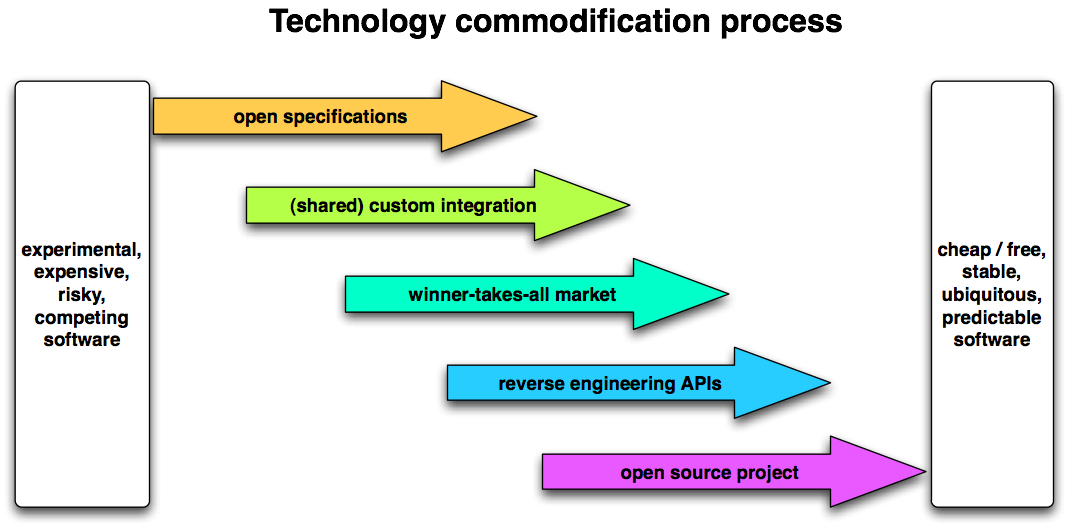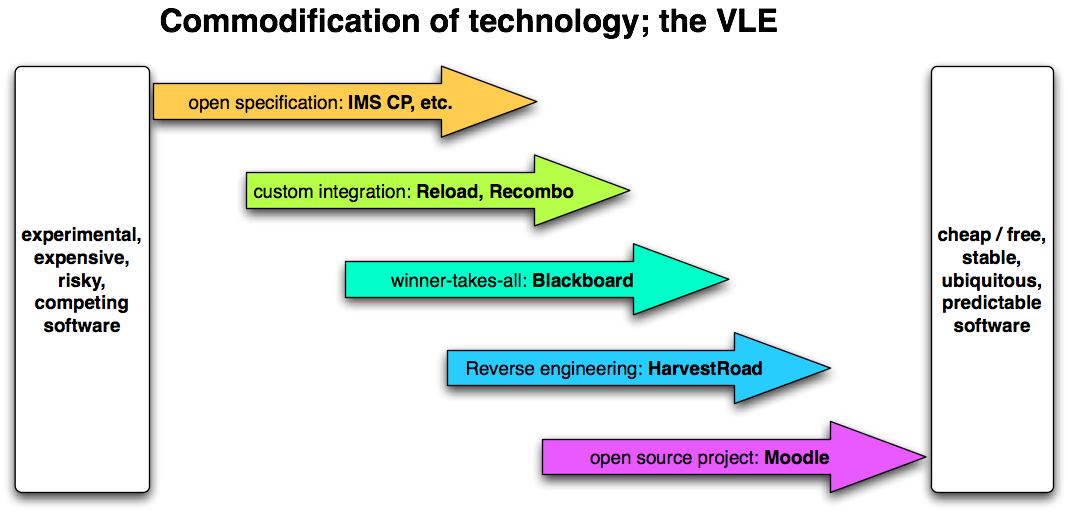Ray Henderson, President of Blackboard’s Teaching and Learning division, formerly of Angel learning, made a very public commitment to supporting standards yesterday.
Although even Ray admits that the final proof will be in the software if and when it arrives, the public statement alone is something that I genuinely thought would never happen. From its inception, Blackboard, and most of the rest of the closed source educational technology community, have followed a predictable US technology market path: to be the last competitor standing was the goal, and everyone would betray every stakeholder they had before they’d be betrayed by them. As with other applications of Game theory in the wild, though, there seems to be at least a suggestion that people are willing to cooperate, and break the logic of naked self-interest.
What’s on offer from Ray is, first and foremost, implementation of IMS’ Common Cartridge, followed by other IMS specifications such as Learning Tool Interoperability (LTI) and Learner Information Services (LIS). SCORM and the Schools Interoperability Framework (SIF) also get a mention.
On the CC front, the most interesting aspect by far is a pledge to support not just import of cartridges, but also export. In a letter to customers, Ray explicitly mentions content authored by faculty on the system, which suggests that it wouldn’t just mean re-export of canned content. You’d almost think that this could be the end of the content “Blackhole”
Catches?
The one immediate catch is this:
creators of learning content and tools will of course still need to have formal partnerships (for example in our case participating in the Blackboard Building Blocks program or the Blackboard Content Provider network) with platform providers like us in order to connect their standards-compliant tool or content to eLearning platforms through supported interfaces.
This doesn’t strike me as at all obvious, and the given reasons – to ensure stability and accountability – not entirely convincing. That customers are on their own if they wish to connect a random tool that claims to exercise most of IMS LTI 2.0, I can understand. But I don’t quite understand why a formal relationship is required to upload some content, nor how that would work for content authors who don’t normally enter into such formal relations with vendors. It’s also not easy to see how such a business requirement would be enforced without breaking the standard.
The other potential catch is that Blackboard’s political heft, combined with its platform’s technical heft, means that the standards that it wants to lead on end up with high barriers to entry. That is, interfaces that are easy to add to Blackboard, may not be so easy to add to anything else. And given Blackboard’s market position, it’s their preferences that might well trump others.
Still, the very public commitment is to the open standards, and the promise is that the code will vindicate that commitment. Even a partial return on that promise will make a big difference to interoperability in the classic VLE area.

